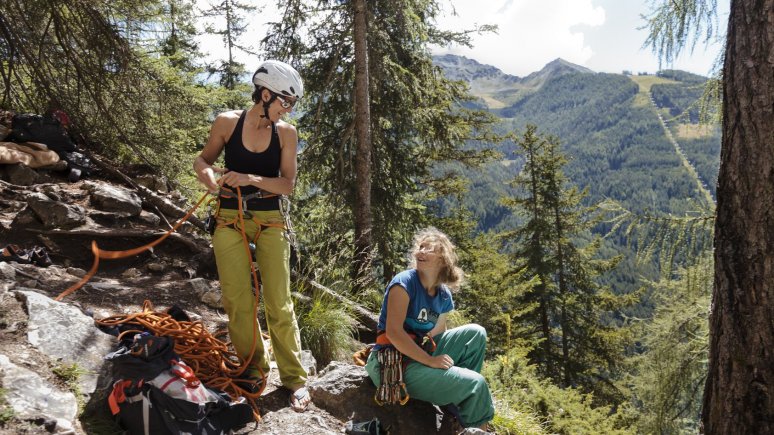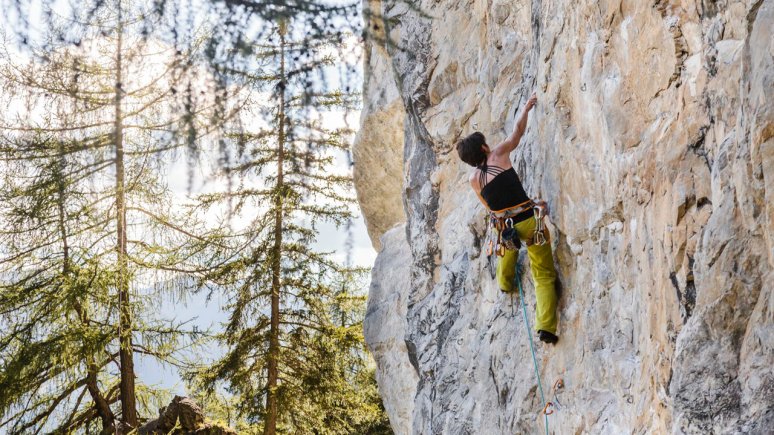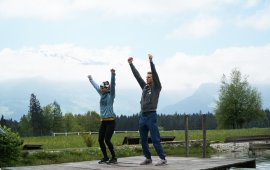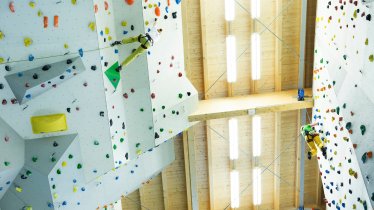As with all sports, it is important to warm up your muscles before you start climbing. The good thing about climbing is that generally you have to walk a little to get to the climbing area, so this often serves as a good warm-up. If there is no walk required to get to the climbing area, we recommend that you warm up by skipping using a climbing rope. It is also important to warm up your hands and wrists. The muscles and tendons in this part of the body are subject to the highest levels of stress during climbing.
Never climb alone. You should always be in pairs, with one person climbing and the other person belaying the climber. This also helps to develop mutual trust. Climber and belayer communicate using simple commands which both must be familiar with. One of the most important principles of climbing is that technique is more important than strength. Using the right technique you can save you a lot of energy. A good way to do this is by using your legs as much as possible in order to relieve pressure on your arms. Your hands should mainly be used to balance yourself on the rocks. Keep your centre of gravity as close as possible to the rockface by pushing your stomach and hips towards the wall. The inner part of your climbing shoe should be used to push on as you make progress up the route. Always check you have a secure footing before shifting your weight.
When it comes to using your hands, try and be as precise as possible when finding safe and solid handholds. Do not cling onto the rock with all your fingers at the same time. Instead, use only the number of fingers you actually need. This may feel strange at the start, but it will help you save strength and energy. And remember that most of your weight should always be on your feet anyway and not on your hands. For the same reason, keep your arms stretched out as much as possible. This will also help you save energy.
TIP! Video tutorials with world champion climber Angy Eiter (German)
The best way to train for climbing is ... by going climbing! This will help you to improve your technique, motor skills and strength. Make sure you climb plenty of different routes. Training your finger strength will also help. You can do this using special rubber bands or a device known as a campus board.
As with all sports, it is important to warm up your muscles before you start climbing. The good thing about climbing is that generally you have to…













